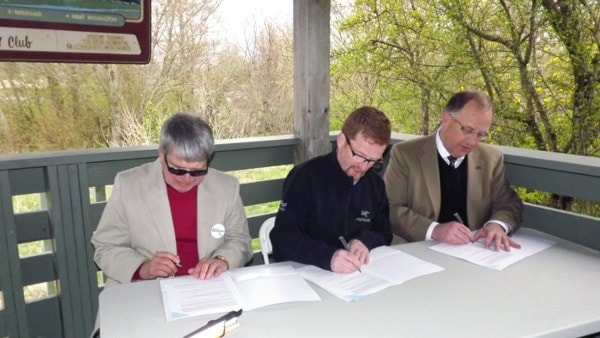The B.C. Ministry of Environment is providing $30,000 towards the first phase of scientific research planning involving blue carbon projects in the Comox Valley.
Environment Minister Terry Lake was in town Tuesday to announce the funding and to sign a Memorandum of Understanding with Vancouver Island University and the Comox Valley Project Watershed Society. The partnership is intended to better understand climate change and improvements to coastal ecosystems — and potentially provide economic benefits.
"This just seemed like an amazing opportunity," said Lake, noting B.C. has 27,200 kilometres of coastline and 422 estuaries to work with.
"Imagine the work that's being done here in the Comox Valley could be replicated across British Columbia, and what that could mean in terms of sequestering carbon, restoring estuaries and providing an environmental benefit for all British Columbians.
"The amount of money we're investing today with our Memorandum of Understanding is relatively small," Lake added. "The application and the benefits are huge."
Blue carbon is the carbon stored in the marine environment, shellfish, plants and sediment. Healthy estuaries remove and store carbon dioxide, possibly even more effectively than plants on land.
"I believe this is something we can explore outside of our province," Comox Valley MLA Don McRae said. "This is something that can benefit communities from Alaska to California."
Project Watershed chair Paul Horgen said eelgrass meadows are disappearing from estuaries because of pollution, habitat destruction and burial.
"Their loss is a loss of an important natural carbon sink," Horgen said.
The three parties have agreed to:
• Identify additional areas for blue carbon projects along the B.C. coast;
• Evaluate the cost per tonne for such projects;
• Undertake projects involving shoreline and estuary protection, and habitat restoration activities on private and public lands;
• Undertake research and analysis to support the creation and sale of greenhouse gas offsets from blue carbon projects that will be recognized as quality offsets in international markets.
reporter@comoxvalleyrecord.com
